Kodavathis of a generation or two before mine would have been surprised —if not disbelieving and mildly indignant —to see their favourite coconut toffee listed (under the slightly different name of coconut ice) as a traditional British homemade dessert.
This luscious confection, usually tinted a delicate pink or pale green, comes from a long line of fudges, cheeses, toffees and tray bakes that filtered into Coorg kitchens with the coming of the coffee plantations in the mid-19th century, bringing with them a typical plantation style of living, eating, décor and entertainment.
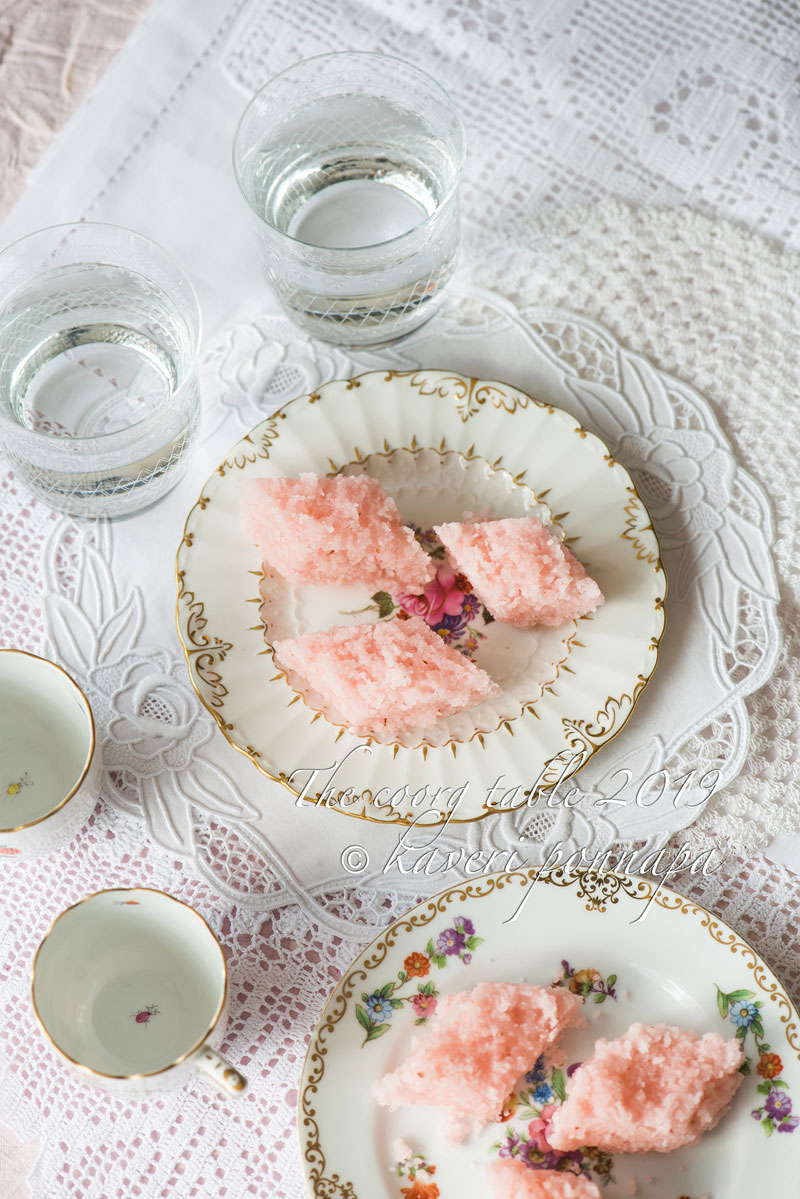
Coorgs who lived on British style plantation homes consciously chose a style of life that evolved from a mingling of two entirely different ways of life, creating, in the process, an appealing new style. They benefited from employing cooks who had trained and worked in any one of the several Planters’ Clubs dotted across the tea and coffee districts of South India; this often eccentric, but extremely talented tribe specialised in a mixed, Anglo-Indian style of cooking, full of unexpected combinations, and an inventive use of spices.
An invitation to dine at a plantation home was always a treat during my childhood. Exquisite lace and hand embroidered linen covered the table. The most sumptuous mingling of arrays of Coorg puttus, curries and fries, jostling for space with roast chicken, ham, fish in white sauce, discreetly spiked with green chillies, dinner rolls from the local bakery and potato salads was presented on beautiful English crockery, acquired and used with great care. The eclectic mix of dishes — robustly Coorg and British-influenced, exotic and attractive —complemented each other in every way, without obvious effort. High teas were immensely popular with an eclectic mix of cakes, sandwiches, puttus and an assortment of Coorg snacks, such as Bale murku and Koovale puttu.
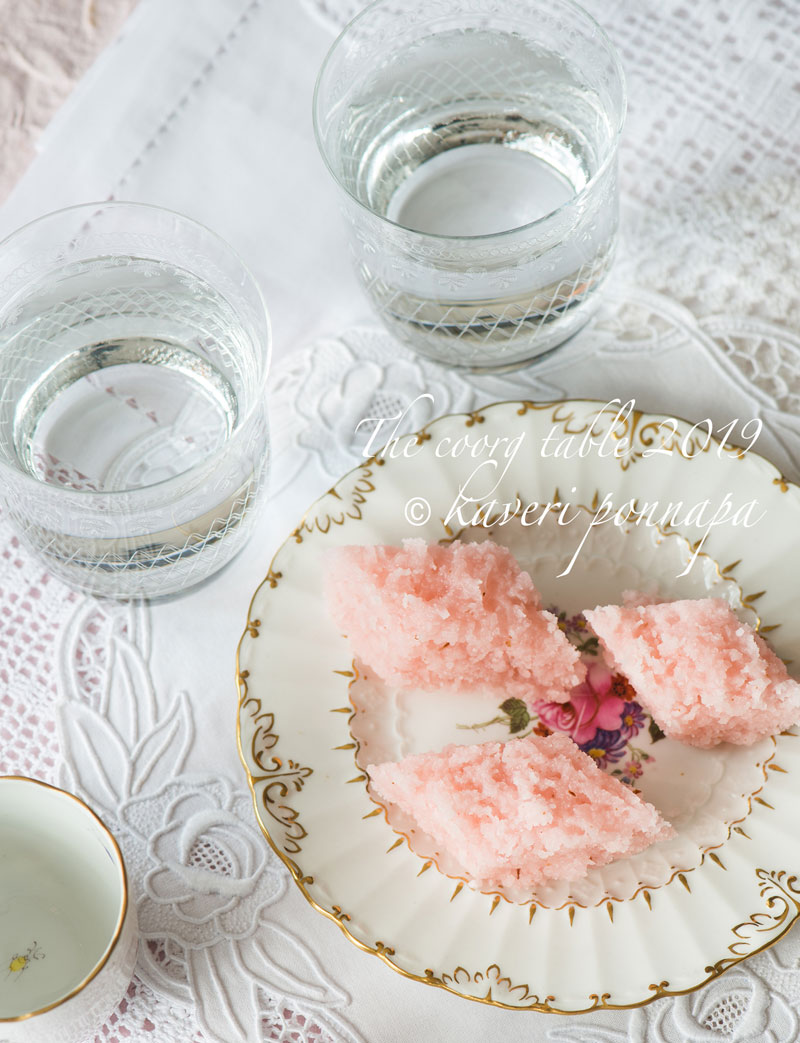
At one end of the table, sparkling with temptation, alongside a more elaborate dessert or two, were the squares, blocks and diamonds on which the ladies lavished extra attention. These were the portable treats that you picked up at the end of the meal, and Coorg women prided themselves on the quality of this particular class of confectionary that they produced, something that is still true.
Coconut toffee was always wildly popular; its soft succulence came from fresh coconut cooked with reduced milk, sugar and the merest hint of flavouring; this was usually enough to seduce even the most indifferent palate. Piles of coconut toffee were always present at weddings; when babies received their given names; when you happened to drop in on a neighbour in the middle of the morning. They always disappeared very quickly. Juicy and slightly chewy, with all the delicate sweetness of coconut, they also fitted the Coorg style of sweet dishes that were never too elaborate, always freshly made and easy to carry away.
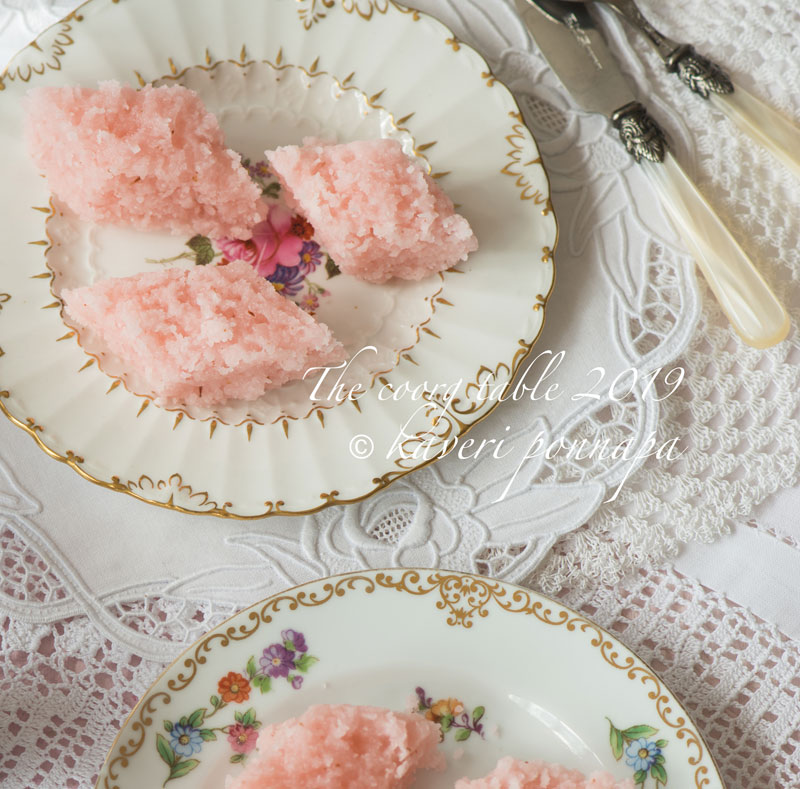
There is a cherished stash of inherited, handwritten instructions and many more pages culled from women’s magazines for cakes; bakes; fudges; toffees; jams; jellies; roasts, sauces and chutneys that link back to the plantation style life in Coorg, which lasted well into the 20th century. This collection came from women I greatly admired, and it records tastes and dishes that may have come from the British, but were thoroughly adapted to local tastes by the time they got past a few generations of Coorg women, and made their way into my kitchen. My mother-in-law’s sister made a solid milk fudge, layered and coloured pink and white. She called it glacé, and it was the toast of the table at every family celebration. She refused to reveal the exact proportions she used, despite many years of attempting to extract the recipe from her. But recently, I discovered that it is identical to the late 19th century Cream Toffee recorded in various British cookbooks. It probably came into her recipe collection through many twists, turns and wanderings. Just as the coconut toffee —or coconut ice — ended up as a British sweet on an island where coconuts never grew.
All Food Styling: Kaveri Ponnapa
Photo Credits: A.G.P Sathyaprakash
Do look out for the recipes of all the food featured here in my upcoming cookbook.

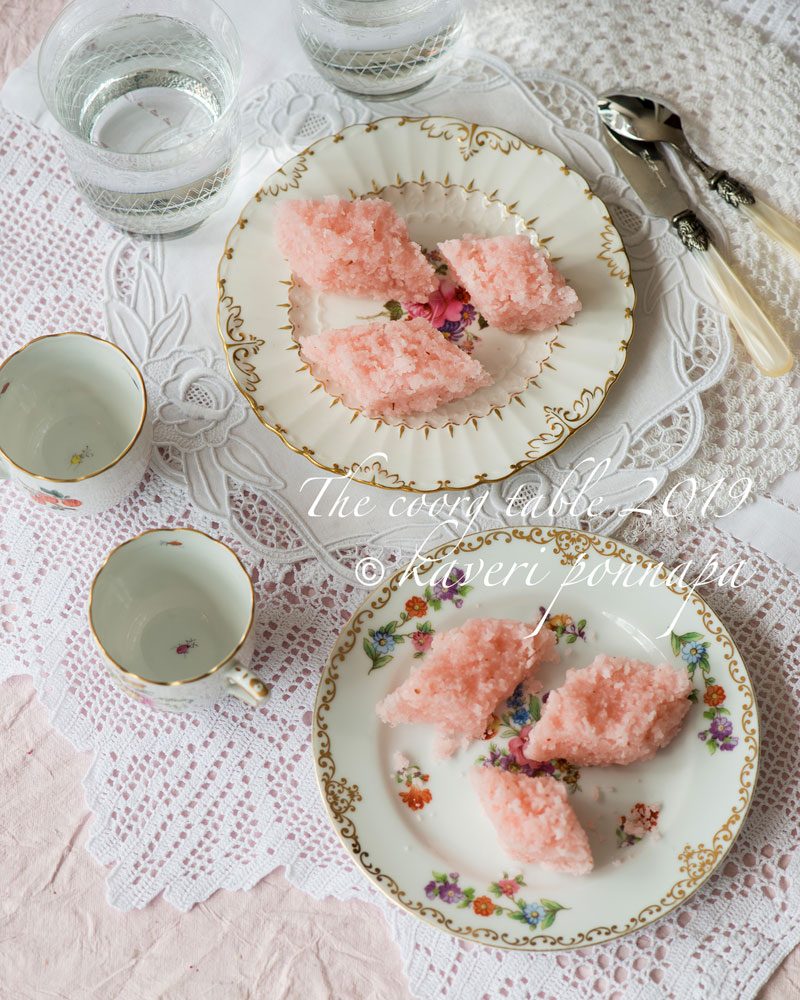
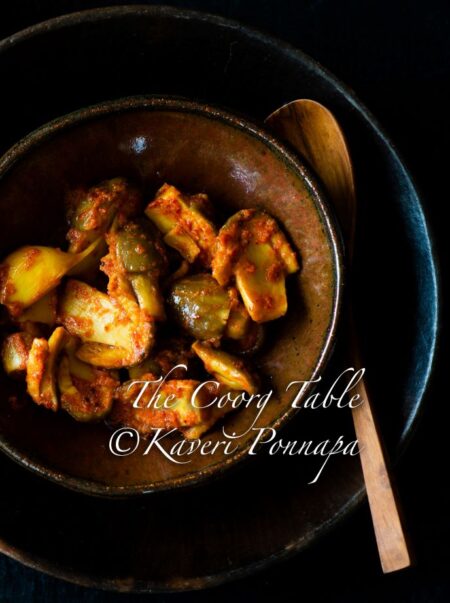
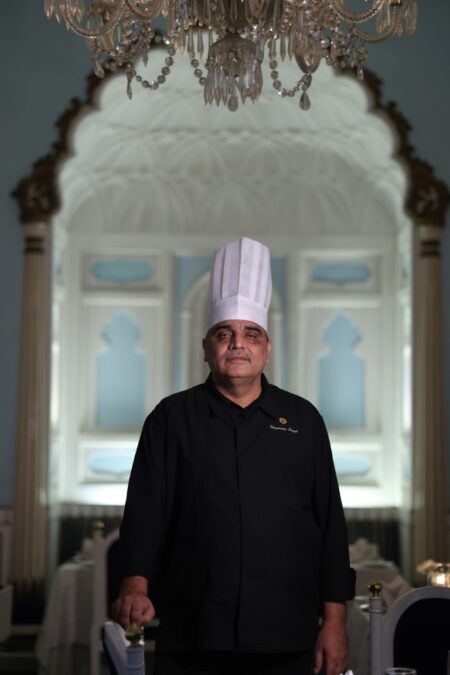

After roaming around in the ‘plantation’ I reached here .😀
Your writing takes me back to my childhood reading of Laura Ingalls Wilder’s books . Magical . Dreamy.
Thanks for the beautiful writing and photographs.
Hello Sumana, I’m so glad you found your way to The Coorg Table, and enjoyed reading the posts. This space has been rather quiet as I attend to other work, but should pick up sometime soon. Do keep reading! Kaveri.
Want to make this real bad as I have some good fleshy coconut — is there any chance of getting the secret out ??? Pl……help!!!
Thanku
Maria, please email me: kaverikamb@gmail.com
I’ll walk you through the process! Warm wishes. Kaveri
Hi, I would love to try a couple of your recipes but it’s such a downer when I can’t find any….. hopefully it will be soon. Waiting and counting!
God bless
Hi Maria, I know, I know! My sincere apologies about this, but I really hope that the wait will have been worth it. There are so many things that go into the making of a book, one that I hope will be special, that the work seems to go on. Thank you so much for your patience, and your continued interest. They mean a lot to me, and keep me motivated Warm wishes. Kaveri
The shades of pink and light green coconut toffee reminds me of my granny. She made it all the time as it was my favorite , the long afternoons spent in kitchen watching her prepare it and also it was her special snack for all my aunt’s and uncles weddings. Brings back lot of memories with my granny ❤️
Hello Priyanka, welcome to The Coorg Table. Thank you for sharing this lovely memory of your Grandmother, and the time spent watching her. Coconut toffee is one of my favourites too, and one of my grandmothers made very well. Everyone loved it. After many trials in my own kitchen, I have finally found the version that I like best. Warm wishes. Kaveri
Such a lovely read . Takes me back to my childhood of a similar mix of British and Indian in Army messes . With chicken roasted in a cut up Dallda Tin and the must have Trifle pudding .
Thank you very much, Puneeta, I’m so glad you enjoyed reading this post. Like you, I too, have memories of those Trifle Puddings in Army Messes. Somehow they always tasted so delicious, even when a bit soggy after being made with a mixture of locally available ingredients, that years later, the more sophisticated versions never worked the same magic. Warm wishes. Kaveri
Loved this post it also reminds me of my childhood days.
Hello Bindu, I hope you made some coconut toffee after reading this post. We all ate rather a lot of coconut toffee those days! Warm wishes. Kaveri
Earlier Coconut toffee was one of the main recipe in Coorg marriages, I do remember my granny used to prepare this and store in the vessel and when we were gathering there we were all enjoying eating them, even my mom prepares this and she will add saffron and some time food colours to make it colourful and attractive… nice again your writing made me to go back to my childhood days…thank you….
Yes, it was such a wedding special, Kaverappa. One always looked forward to seeing it piled up on a table full of snacks. How interesting that your mother uses saffron-I must experiment with that flavour. Generally, saffron adds its rich character to any dish in which it is used- I’m sure it will do the same for coconut toffee.Thank you for reading, and for sharing your memories. Warm wishes.Kaveri